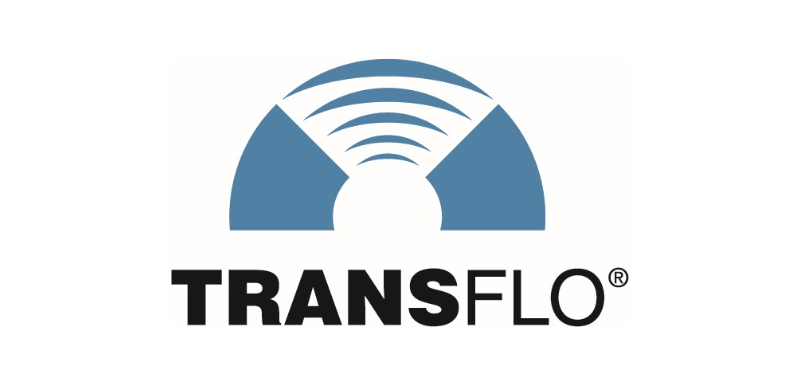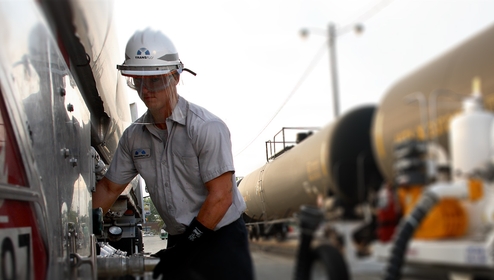The safety of both workers and equipment is paramount in any transloading operation. During the loading/unloading process, workers face potential dangers such as product falling off, being hit by equipment, inhalation of toxic substances, strains due to improper lifting techniques, and more. Equipment could be damaged by accidents or employee errors. Product spillage may cause irreparable damage to the environment, a topic that has gained significant notoriety in recent years. Transloading facilities emphasize safety as a way to minimize risks and delays that would otherwise negatively impact the efficiency of their operations. Additionally, the government seeks to mitigate these risks by establishing rules and regulations designed to protect workers. Facilities are all required to have written documentation of their safety practices on hand.
One of the most important safety rules dictates that the railcar being loaded or unloaded must have at least one wheel blocked and all wheels locked. Blocking a wheel prevents movement of the railcar in any direction. Hand brakes must also be in use during the transfer of product. This is an important step in transloading because it secures the car and eliminates unintentional movement. Such movement may cause a spill, which can create dangerous conditions and/or result in the financial loss of the spilled product. Prior to transfer, access to the track must be secured and caution signs must be posted. Employees must complete thorough inspections of the equipment prior to loading or unloading. Should the equipment fail any part of the visual inspection, the transfer cannot be completed. This includes checking the qualification stencil to ensure the cars are up to date on inspections and tests, and railcar components must also be checked for damages.
Safety precautions are especially important when transferring HazMat commodities. This category includes commodities that are flammable, combustible, corrosive, explosive, shipped at high temperatures, are toxic inhalation hazards (TIH), or are hazardous wastes. Specific regulations vary for each class of hazardous material since each class comes with its own set of unique challenges. For more information on the requirements for different types of hazardous materials, review 49 CFR § 174.9 here. This regulation details the requirements for the safe and legal loading/unloading of hazardous commodities in a transloading facility.
Once all of the appropriate inspections have been completed and all safety measures have been observed, the transfer can begin. Exact procedures vary between car types due to the physical differences of the cars and the differences in the commodities. Conveyor, plastics, and flammable transfers are all featured in videos sponsored by CSX TRANSFLO. In conveyor transfers, designed for the transfer of dry bulk materials, belts or chains are used to move product out of the car and onto a conveyor. Pneumatic conveyors use vacuum systems that are adept at minimizing product spillage and heat buildup, and are ideal for the transfer of plastic pellets. Flammable transfers generally require more specialized transfer equipment due to the dangerous nature of these products. Emergency stop valves, as well as portable showers, need to be in place to prevent accidents or injury.
Emissions and fume inhalation are two important safety considerations for a transload operation, particularly when hazardous commodities are involved. Transferring such products involve the use of equipment dedicated solely to reducing, and ideally eliminating, emissions that can be harmful to personnel or the environment.
All transload facilities are governed by federal, state, and local regulations specific to each location. These regulations are set to ensure the safety of personnel at the facilities, as well as the surrounding communities and the environment.
In some cases, product testing may be required while the commodity is at the transload facility. In these instances, the transload operator will be called on to perform the testing. As an industry leader in transloading services, TRANSFLO can provide product testing and ensure safety regulation compliance.
After unloading or loading is complete, personnel must ensure that the railcar is ready for transit by completing all required inspections and shipment documentation. Failure to do so may result in accidents or fines. Ensuring that safety practices are followed from start to finish is essential for every transloading facility.
Despite numerous safety precautions, workers must still be aware of the dangers since serious or fatal injuries may occur. It is imperative for personnel, equipment, and the environment that safety procedures are followed to the letter. Preventing catastrophic injuries and damages while promoting a safe, efficient working environment are the goals of all safety practices at a transload facility.

